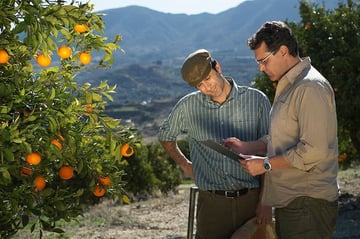It’s Monday morning and although a lengthy to-do list awaits your attention, you’re feeling refreshed and ready to take on the week. You begin scrolling through your email when, suddenly, you’re stopped in your tracks. There, in a message ominously marked “URGENT” are those dreaded words:
Product recall.
Immediately you reach for your phone. As a food safety professional, there’s no time to delay. You must assemble your team and stop the issue before it spreads. Every minute wasted is a minute a consumer could become sick from a product they purchased from your brand. It’s go time.
This situation can be hard for even the most prepared and best-educated food safety expert but, unfortunately, it’s not uncommon. In fact, in 2014 alone there were more than 8,000 products recalled by the FDA.
When faced with a recall, you have to be ready for action. Here are the five things you must do when one of your products gets recalled.
1. Rally Your Recall Team
The first thing you need to do, after the issue is discovered, is to assemble your recall team. This team should be composed of highly trained professionals you can trust to help you handle the next steps swiftly and adeptly.
The key member of your recall team is the recall coordinator. This acting leader will have the authority to call upon all other recall team members and make decisions in your absence.
In addition, your team should be composed of the following:
- Quality assurance manager
- Media communications manager
- Customer communications manager
- Regulatory body communications manager
- Complaint investigator
- Legal counselor
2. Notify Applicable Regulatory Agencies
Whether your organization found the issue or you were contacted by the FDA, you still need to take action.
If you discovered the issue yourself, you will need to contact the necessary regulatory agencies directly—such as the FDA or the Food Safety and Inspection Service (FSIS). At this point, it is up to these agencies to investigate the severity of the recall and work with you to resolve the concern.
If the FDA of FSIS contacts you about a recall, you are responsible for responding and taking action, or the government may take legal action against your organization. Under the Food Safety Modernization Act (FSMA) of January 2011, the FDA has the authority to halt food production and shut down any facilities it deems pose a significant threat to public health.
The FDA or FSIS will determine when to officially terminate the recall, but you can submit a request once you feel you’ve rectified the situation.
3. Identify All Products to Be Recalled
Locate and gather all products that were affected by the recall and put all items on hold. Then, locate where all products are within the supply chain and immediately stop distribution. Also be sure to notify those that have the affected product outside of your control. All of these steps can be handled using supply chain traceability software.
4. Determine Which Locations Were Affected
Once you’ve traced back the contamination, you now must determine which locations were affected by the recall. For example, if your restaurant was affected by a spinach recall, you need to determine which locations sourced their spinach from the contaminated supplier or distributor. Or, if you supply packaged goods to a large grocery store chain, you may discover that only one of your packaging facilities was contaminated and the rest are safe.
5. Communicate, Communicate, Communicate
Communication is key to successfully handling a recall. This may involve creating a press release that alerts the media to the recall, and helps prevent the spread of contamination or illness. Additionally, you’ll need to notify your customers directly and inform them of what to do with the recall products (such as return the item to their local retailer for a refund, dispose of it, etc.) Finally, you must communicate with suppliers, distributors and others along the supply chain as well as your own team to ensure everyone is in the loop and prepared to take action.
There’s no doubt a food recall can be a food safety professional’s worst nightmare, but it doesn’t have to become a catastrophe for your brand. After all, it’s your quick thinking and problem-solving finesse that earned you this job in the first place. So long as you’re prepared, you can handle a recall with grace.
Recalls can be stressful, but we’ve got the experience to guide you through this concern. Learn more about how to get prepared in our free resource, The Food Safety Professional's Recall Checklist!
Other posts you might be interested in
View All Posts
Food Industry
6 min read
| October 18, 2019
5 Ways You Can Build a Brand on Food Safety
Read More
Recall
5 min read
| July 13, 2018
Food Recall Management: How Food Recalls Affect Consumer Buying Habits and What You Can Do About It
Read More
Food Safety
8 min read
| February 28, 2017


